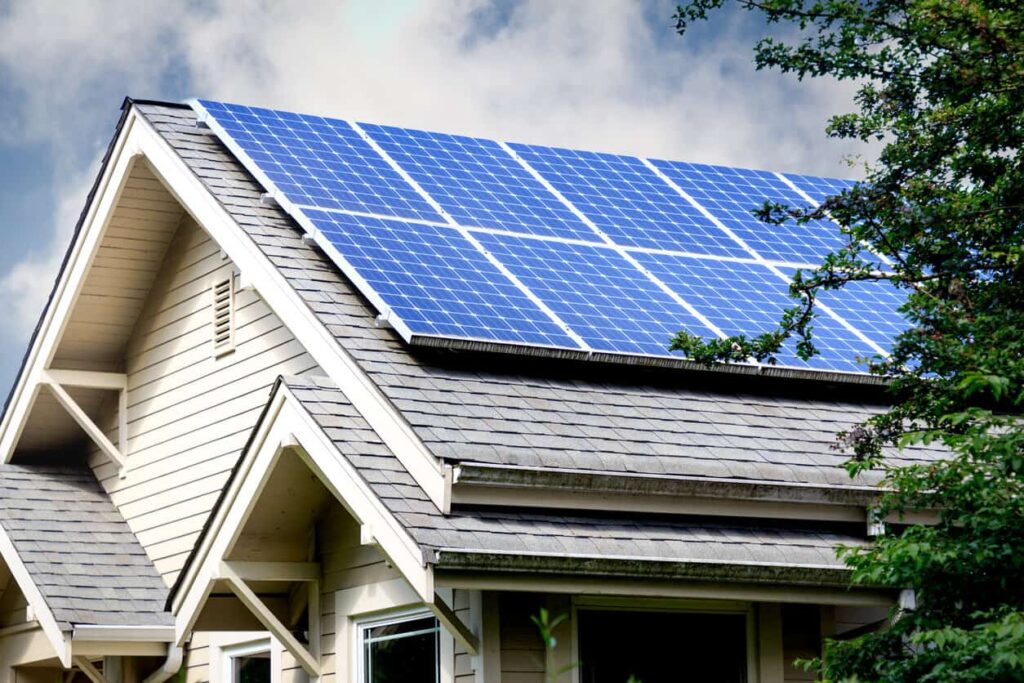Solar residential roofing has gained significant popularity in recent years as more homeowners seek eco-friendly and energy-efficient solutions. This innovative technology allows you to harness the power of the sun to generate electricity for your home while also serving as a protective roof. However, before deciding to invest in solar residential roofing, it’s essential to understand the costs involved. In this blog, we’ll explore the factors that influence the cost of solar residential roofing, helping you make an informed choice about whether it’s the right option for your home.
- Size and Complexity of the System
The size and complexity of the solar roofing system have a substantial impact on the overall cost. The larger the system, the more solar panels and roofing materials will be required. Additionally, the complexity of the installation can affect costs. If your roof has multiple angles, obstacles like chimneys, or unique architectural features, the installation may be more intricate and, consequently, more expensive.
- Solar Panel Type
There are different types of solar panels available, and the choice you make can affect the overall cost. Monocrystalline and polycrystalline panels are common options, with monocrystalline panels generally being more efficient but also more expensive. Thin-film solar panels are another choice, often preferred for their flexibility and lower cost, although they may require more surface area.
- Roofing Material
The type of roofing material you choose for your solar residential roofing can significantly impact the cost. Solar roofing can be installed on various roofing materials, including asphalt shingles, metal, tile, or flat roofing. Some materials may require additional preparation or reinforcement to support the solar panels, increasing the overall cost.
- Energy Needs
Your home’s energy needs and the desired energy production from your solar roofing system will affect the cost. If you aim to generate most or all of your electricity from solar panels, you’ll need a larger and more complex system, which can be more expensive upfront. However, it may lead to more significant long-term savings on your energy bills.
- Location and Sunlight Availability
The location of your home and the amount of sunlight it receives also play a role in determining the cost of solar residential roofing. Homes in regions with abundant sunlight may require fewer solar panels to generate the same amount of energy, potentially reducing the installation cost. Conversely, homes in areas with limited sunlight may need a larger system, leading to higher costs.
- Incentives and Rebates
Government incentives and rebates can significantly reduce the cost of solar residential roofing. These incentives vary by location and may include federal tax credits, state or local rebates, and utility company incentives. Be sure to research available incentives in your area to maximize your savings.
7. Installation Costs
The installation process itself involves labor costs, which can vary based on factors like location, labor rates, and the complexity of the installation. It’s essential to choose an experienced and reputable installer who can efficiently and effectively complete the project.
8. Battery Storage
If you choose to include battery storage with your solar residential roofing system, it will add to the overall cost. However, a battery can provide energy storage for use during periods of low sunlight or power outages, increasing the system’s versatility and value.
Conclusion
The cost of solar residential roofing can vary widely based on several factors, including the size and complexity of the system, the type of solar panels, roofing material, energy needs, location, incentives, installation, and the inclusion of battery storage. While solar residential roofing represents a significant investment, it offers long-term benefits such as reduced energy bills, increased home value, and environmental sustainability.
Before making a decision, it’s advisable to obtain quotes from reputable solar roofing installers in your area and carefully evaluate your specific needs and goals. Keep in mind that government incentives and rebates can help offset the upfront cost, making solar residential roofing a more financially viable option. Ultimately, by understanding the factors that influence the cost and weighing the long-term benefits, you can make an informed choice that aligns with your budget and environmental aspirations.


